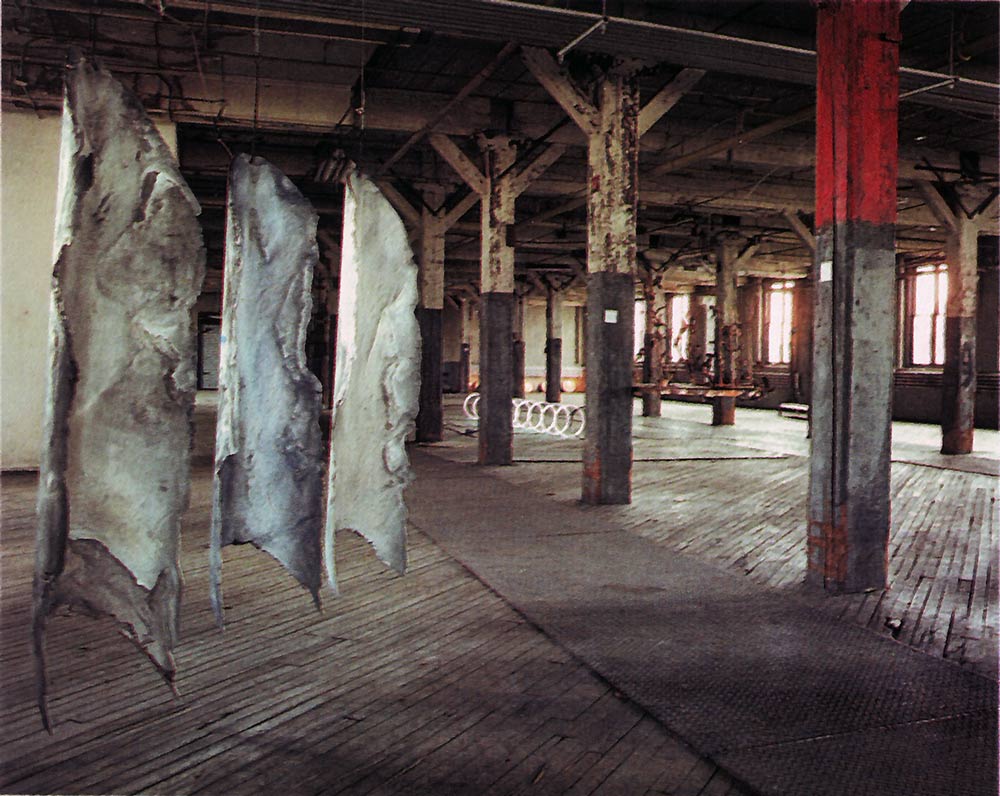
55 Ferris Street II
February 1993 · by Janet Koplos

Like a tenacious vine that won't be stopped from finding its way to the light, art that's been uprooted from 57th Street or SoHo is now flourishing further afield—in the industrial landscape of Red Hook, Brooklyn, for example. Last year independent curator Frederieke S. Taylor initiated a series of sculpture exhibitions in an enormous, unpolished space in a factory building that houses a few artists’ studios. She titled the shows with the building’s address. The first was held last summer, the second in the fall, and a third will open in March. The 55 Ferris Street shows differ from those at the somewhat smaller but similarly raw Thread Waxing Space in Manhattan, where usually dozens of artists are packed in: the Ferris Street shows have featured nine or ten artists, each given lots of elbow room. The most striking aspect of the fall show was a rare formal coherence resulting from simple physical coincidences among independent art works.
Joseph Zito’s Cantus… consists of three semicylindrical slabs of cast aluminum that hang free and conceptually refer to bells tolling—and they do in fact produce a reverberant tone when struck. The ragged forms are richly associative: they might be figures, but the way they hang suggests beef carcasses; they might be shrouds, but their curvature is also protective and comforting. The pouring process produced beautiful waves and swirls in the silver–gray metal that express a rhythmic release.
Stephen Whisler’s and Pietro Costa’s sculptures are also approximately cylindrical and, like Zito’s, play material beauty against allusions both positive and poignant. Costa’s floor work is a “tube” of doubled rings of neon. Even without knowing that one ring is dark because it contains the artist’s blood, and without reading his catalogue rumination on identity and death, one can see that the form itself expresses isolation, intensity, and inwardness, along with literal illumination and grace. Whisler’s charred–wood–and–steel towers, with their doors and padlocks and too high windows, more explicitly convey a sense of involuntary isolation, but his craftsmanship softens the bleakness of the works.
All the curving elements in Nene Humphrey’s installation of wire balls, tubes and suspended rings are faintly organic, yet all are types of traps or shackles. Anne Chu’s delicate, carved wooden wagon wheel lay prone, trapped in a square net of heavy rope. Margaret Cogswell’s installation, part of a work shown at Middlebury College last year within a steel–rod cage, here used the rows of square posts dividing the exhibition space as an enclosure. One wood object had a swooping “tail” of steel flagella, while from a second object—a sort of landscape fragment—arose a rectilinear tangle of steel, like overlapping squares drawn with a single continuous line, that reached to the ceiling. And this boxy frame was a secondary formal motif of the show, seen again, for example, in Mike Metz’s small floor maze made of bars of soap with text carved into them. In the consistently strong work by 10 artists (also included were Bonnie Rychlak, James Donahue and Tom Hatch), these formal repetitions—reiterated curves and angles that pulled one’s attention to the next work and then called it back to the previous one—created a whole with an extraordinary resonance.